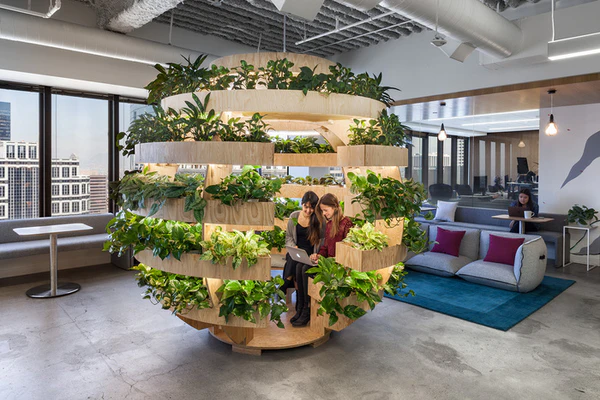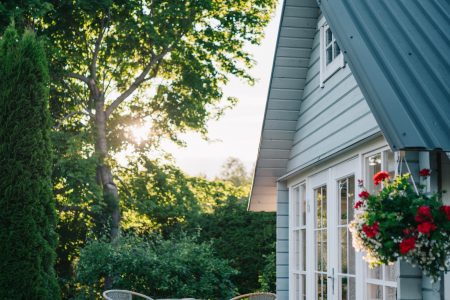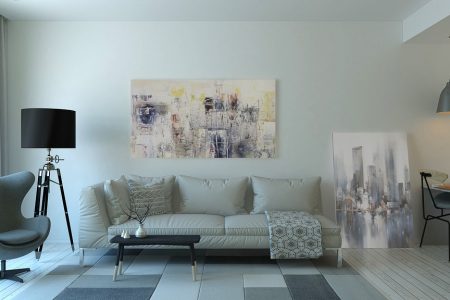In a world characterized by concrete jungles and urban landscapes, the longing for a connection with nature is ever-present. Biophilic design, a concept rooted in the idea of bringing the outdoors inside, has gained significant popularity. One of the most captivating manifestations of this design trend is the creation of indoor jungles using living walls and atriums. These green oases are not only aesthetically pleasing but also offer a plethora of physical and psychological benefits. In this blog, we’ll explore the art and science of biophilic bliss by delving into the concept of indoor jungles and the marvels of living walls and atriums.
The Biophilic Design Revolution
Biophilic design is rooted in the innate human desire to connect with the natural world. It recognizes the positive impact that nature has on our well-being, from reducing stress and anxiety to improving creativity and productivity. Biophilic design principles aim to integrate nature into our built environments, resulting in spaces that nourish our minds, bodies, and spirits.
Creating Indoor Jungles: The Concept
Indoor jungles, also known as green walls or vertical gardens, are an extraordinary manifestation of biophilic design. They transform mundane walls into lush, vibrant ecosystems that mimic the diversity and serenity of the natural world. These living walls typically consist of a variety of plant species, from ferns and succulents to trailing vines, all thriving in vertical planters or structures.
Atriums, on the other hand, are enclosed spaces within a building that often serve as open, central courtyards filled with plants and natural light. They are designed to bring the outdoors in, providing a space where nature and architecture coexist in harmony.
The Benefits of Indoor Jungles
Creating an indoor jungle with living walls and atriums goes beyond aesthetics; it offers a myriad of benefits that enhance our physical and mental well-being.
- Improved Air Quality: Plants act as natural air purifiers, filtering out toxins and increasing oxygen levels. A well-maintained indoor jungle can significantly improve the air quality in your home or workplace.
- Reduced Stress and Anxiety: Exposure to greenery has been shown to reduce stress, anxiety, and even lower blood pressure. The calming effect of indoor jungles can create a peaceful oasis in the midst of a hectic environment.
- Enhanced Creativity and Productivity: Studies have shown that the presence of plants in indoor spaces can boost creativity and productivity. Whether you’re working from home or in a corporate office, an indoor jungle can invigorate your mind and promote focus.
- Temperature Regulation: The transpiration process of plants helps to cool the air and maintain a more comfortable indoor temperature. This can lead to energy savings and increased comfort.
- Connection with Nature: Perhaps the most profound benefit of indoor jungles is the feeling of being connected to nature. It’s a reminder of the beauty and tranquility of the natural world, even when you’re surrounded by concrete and technology.

Designing Your Indoor Jungle
Creating an indoor jungle is an art and a science. Here are some key considerations when embarking on this biophilic design journey:
- Select the Right Plants: Choose a diverse range of plants that are suitable for indoor conditions. Consider factors such as light levels, humidity, and maintenance requirements.
- Plan the Layout: Whether you opt for a living wall or an atrium, careful planning is essential. Consider the space, the overall aesthetic, and how the design will complement the existing interior.
- Lighting Matters: Adequate light is crucial for plant health. If natural light is insufficient, you may need to invest in grow lights to ensure your indoor jungle thrives.
- Maintenance and Care: Like any garden, indoor jungles require regular maintenance. Ensure you have a plan for watering, fertilizing, and pruning as needed.
- Furniture and Accessories: Choose furniture and decor that complements the greenery. Natural materials and earthy tones can enhance the biophilic experience.
Creating an indoor jungle with living walls and atriums is more than just a design trend; it’s a way to rekindle our connection with the natural world in a modern, urban setting. These green oases not only beautify our spaces but also promote physical and psychological well-being. As we seek respite from the concrete jungles we inhabit, indoor jungles serve as a reminder of the profound benefits of our intrinsic connection with nature. So, if you’re looking to infuse your living or working space with life, vibrancy, and serenity, consider embarking on the journey of biophilic bliss and create your own indoor jungle.





